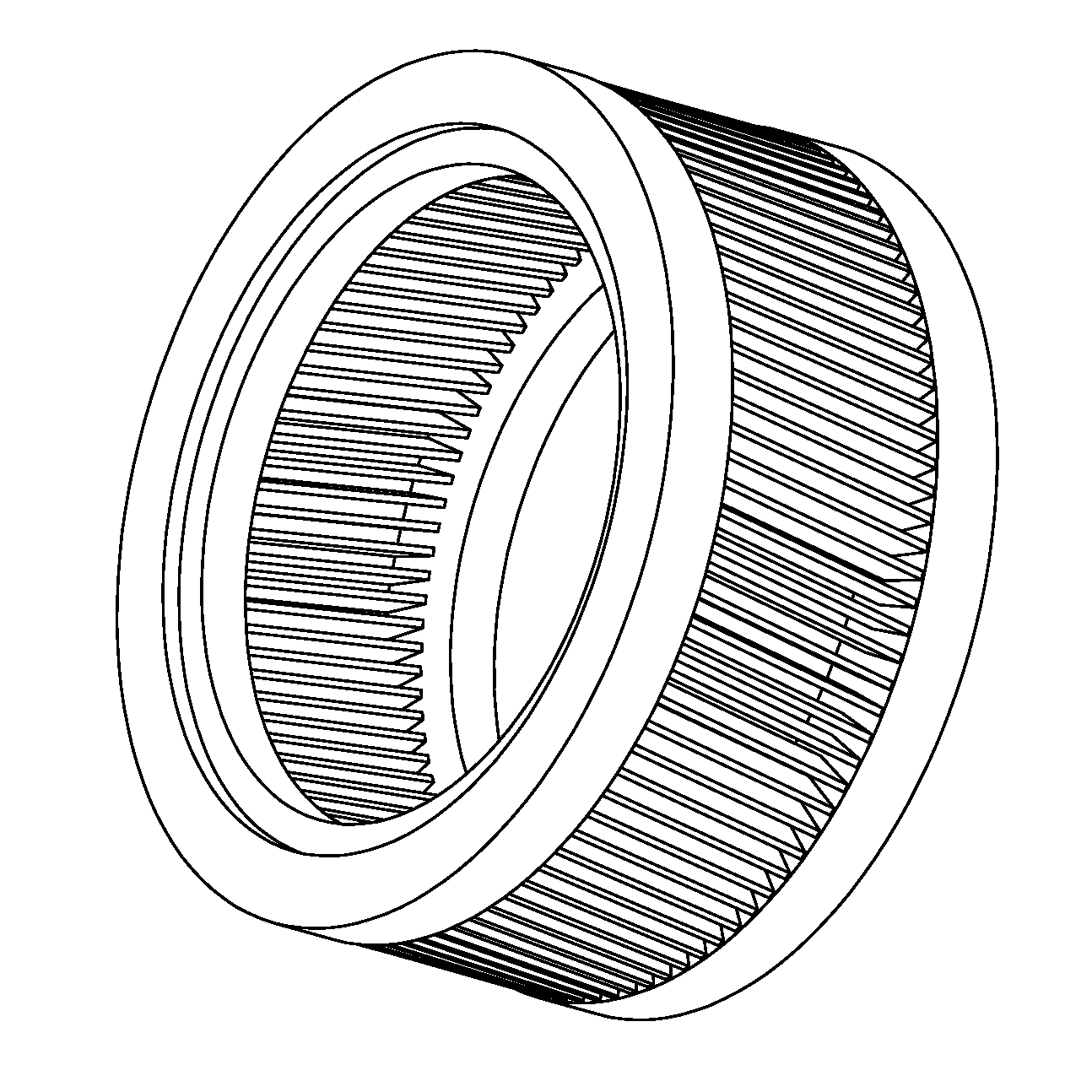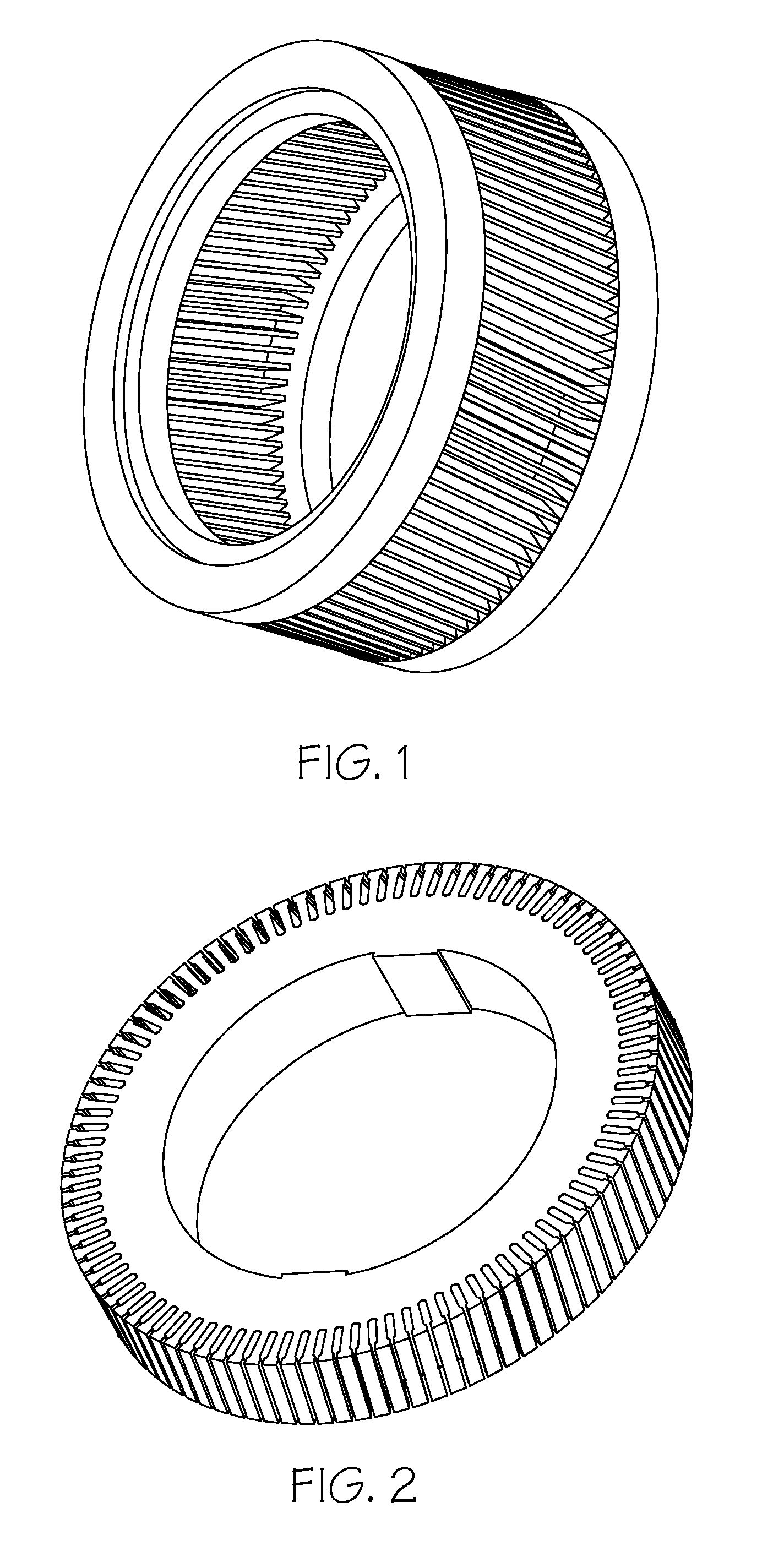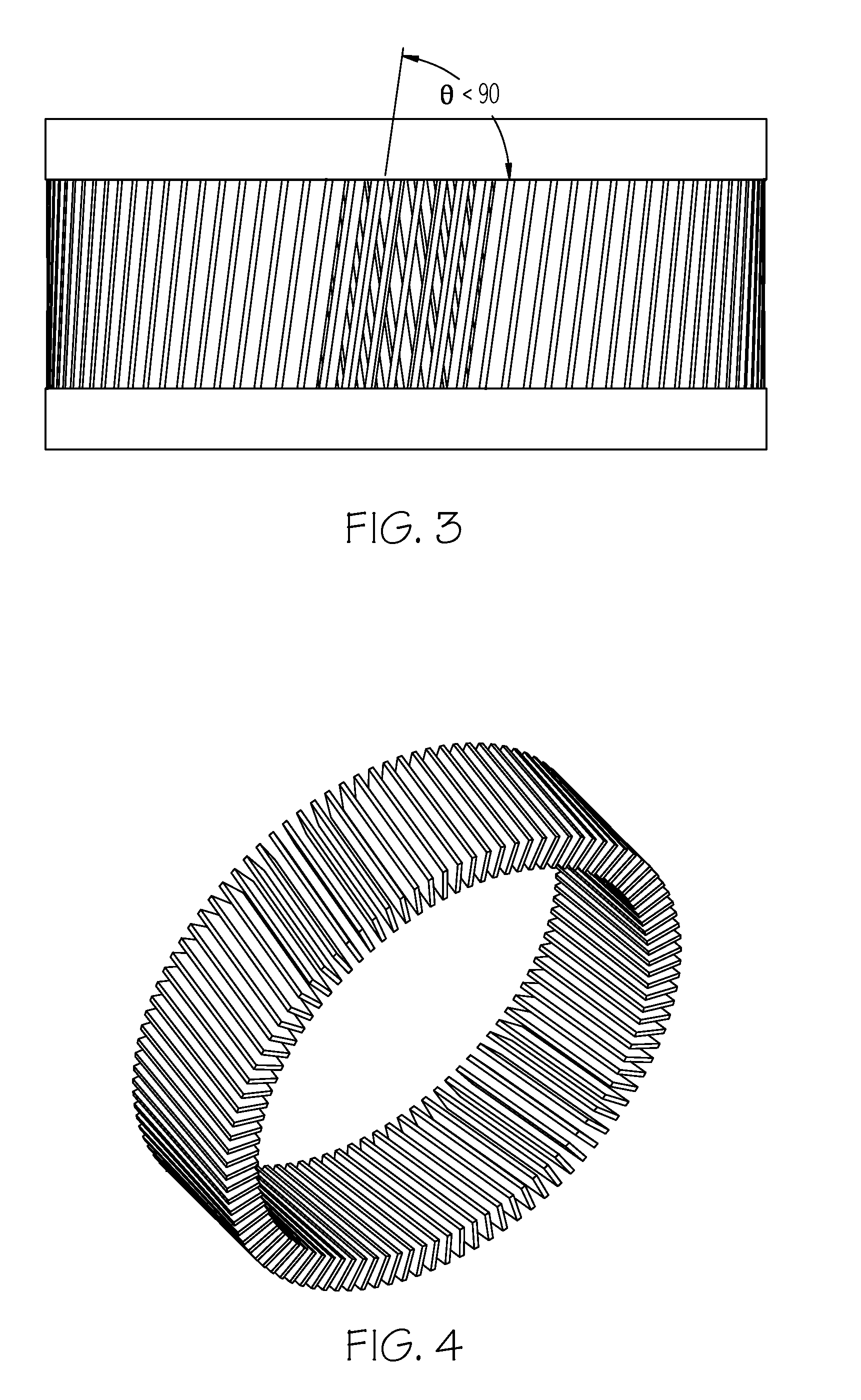Methods of manufacturing induction rotors with conductor bars having high conductivity and rotors made thereby
a technology of conductor bars and rotors, which is applied in the field of manufacturing induction rotors, can solve the problems of reducing the durability of electric motors, reducing the electric motor's durability, and limiting the use of copper, so as to improve the electric conductivity and durability of rotors, the effect of high conductiv
- Summary
- Abstract
- Description
- Claims
- Application Information
AI Technical Summary
Benefits of technology
Problems solved by technology
Method used
Image
Examples
Embodiment Construction
A squirrel cage rotor is a cylinder that is mounted on a shaft rotating in an induction motor. It contains longitudinal conductor bars set into squirrel slots and connected together at both ends by short rings forming a cage-like shape. FIG. 1 shows an illustration of one embodiment of a squirrel cage rotor. The core of the rotor is built with stacks of electrical steel laminations. FIG. 2 shows an illustration of one embodiment of a stack of laminate steel.
The field windings in the stator of an induction motor set up a rotating magnetic field around the rotor. The relative motion between this field and the rotation of the rotor induces electric current in the conductor bars. In turn these currents lengthwise in the conductors react with the magnetic field of the motor to produce force acting at a tangent to the rotor, resulting in torque to turn the shaft and the rotor. In effect, the rotor is carried around with the magnetic field, but at a slightly slower rate of rotation. The di...
PUM
| Property | Measurement | Unit |
|---|---|---|
| melting point | aaaaa | aaaaa |
| porosity | aaaaa | aaaaa |
| thick | aaaaa | aaaaa |
Abstract
Description
Claims
Application Information
 Login to View More
Login to View More - R&D
- Intellectual Property
- Life Sciences
- Materials
- Tech Scout
- Unparalleled Data Quality
- Higher Quality Content
- 60% Fewer Hallucinations
Browse by: Latest US Patents, China's latest patents, Technical Efficacy Thesaurus, Application Domain, Technology Topic, Popular Technical Reports.
© 2025 PatSnap. All rights reserved.Legal|Privacy policy|Modern Slavery Act Transparency Statement|Sitemap|About US| Contact US: help@patsnap.com



